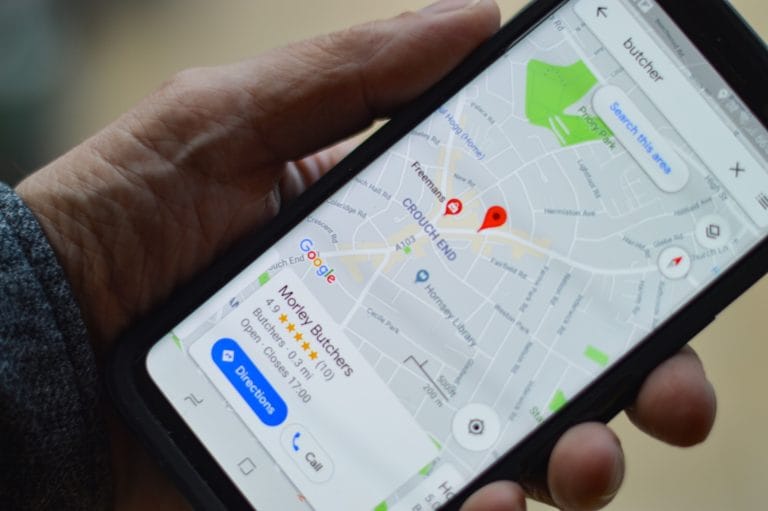Get Noticed Online: How to Rank Higher on Search Engines.
In today’s digital age, having a strong online presence can make all the difference for businesses and individuals alike. Search engine optimization (SEO) is a crucial aspect of building that presence, as it determines where your website or content ranks on search engine results pages (SERPs). Ranking higher on SERPs can lead to increased visibility, traffic, and ultimately, conversions. However, with so many websites and pages vying for the top spots on SERPs, it can be challenging to know where to begin with SEO. In this article, we will explore the best practices for ranking higher on search engines and getting noticed online.
Understanding Search Engine Optimization (SEO)
What is SEO?
Search Engine Optimization (SEO) is the process of optimizing your website to improve its visibility and ranking on search engine results pages (SERPs). The goal of SEO is to increase organic traffic to your website by making it more relevant and valuable to users.
Why is SEO important?
SEO is important because it helps your website get noticed by search engines like Google, Yahoo, and Bing. By optimizing your site for relevant keywords and improving the user experience, your website can rank higher on SERPs and attract more potential customers.
How do search engines work?
Search engines use complex algorithms to crawl and index websites, analyzing them for relevance and quality. They use this data to rank websites on SERPs based on factors like keyword relevance, content quality, and user experience.
Conducting Keyword Research and Analysis
What are keywords?
Keywords are the words or phrases that users enter into search engines when they’re looking for information or products. By targeting relevant keywords in your content, you can increase your website’s visibility and attract more organic traffic.
How to conduct keyword research
To conduct keyword research, start by brainstorming a list of relevant topics and terms related to your business. Then, use keyword research tools to analyze search volume, competition, and relevance for those keywords. Choose keywords that have high search volume, low competition, and are relevant to your business.
How to analyze keyword competition and search volume
To analyze keyword competition and search volume, use tools like Google Keyword Planner or SEMrush. These tools can help you identify the search volume and competition for keywords, as well as suggest related keywords that may be easier to rank for.
Creating High-Quality Content
Why content is so important for SEO
Content is the backbone of your SEO strategy. High-quality content can improve your website’s relevance and authority, attracting more organic traffic and improving your ranking on SERPs.
How to create high-quality, SEO-friendly content
To create high-quality, SEO-friendly content, start by understanding your target audience and their needs. Use keyword research to identify relevant topics and create content that provides value to your audience. Make sure your content is well-written and easy to read, and includes relevant images, videos, and infographics.
Optimizing content for keywords and user intent
When optimizing your content for SEO, make sure to include relevant keywords in your titles, headings, and body text. However, avoid keyword stuffing and focus on creating content that is relevant and valuable to your target audience. Consider user intent when creating content and optimize it to provide the best possible user experience.
Optimizing On-Page Elements
What are on-page elements?
On-page elements are the elements on your website that affect its ranking on SERPs. These include page titles, meta descriptions, headers, images, and videos.
How to optimize page titles, meta descriptions, and headers
To optimize page titles, meta descriptions, and headers, include relevant keywords and make sure they accurately describe the content of your page. Use header tags (H1, H2, H3) to structure your content and make it easier for search engines to understand.
Optimizing images and videos for SEO
Optimize images and videos for SEO by including relevant keywords in their file names, alt tags, and captions. Use high-quality images and videos that are relevant to your content, and compress them to improve page load times.
Building Quality Backlinks
What are backlinks?
Backlinks are incoming hyperlinks from one website to another. They are also referred to as “inbound links” or “incoming links.” Backlinks are important for SEO because they can improve a website’s search engine ranking. The more high-quality backlinks a website has, the more authoritative it appears in the eyes of search engines.
Why backlinks are important for SEO
Search engines like Google use backlinks to determine the relevancy and popularity of a website. A website with more backlinks from high-authority websites is considered more trustworthy and valuable. This translates into higher search engine rankings, which can drive more organic traffic to your website.
How to build high-quality backlinks
One of the best ways to build high-quality backlinks is to create great content that other websites will want to link to. This can be achieved by writing informative blog posts, publishing research studies or whitepapers, or creating engaging infographics. You can also reach out to other websites in your industry and request a link exchange or guest posting opportunity. Just make sure to only pursue backlinks from reputable and relevant websites.
Leveraging Social Media for SEO
How social media impacts SEO
Social media can indirectly impact SEO by driving traffic to your website and increasing brand awareness. It also allows you to engage with your audience and build relationships, which can lead to more backlinks and social shares of your content. While social media signals are not direct ranking factors, they can still have a positive impact on your search engine rankings.
How to optimize social media profiles for SEO
To optimize your social media profiles for SEO, make sure to use relevant keywords in your profile descriptions and posts. Include links to your website in your social media bios and posts. Use hashtags to increase visibility and reach on social media platforms. Finally, ensure that your social media profiles are visually appealing and reflective of your brand.
How to promote content on social media to improve SEO
To promote your content on social media, create catchy headlines and engaging visuals to capture your audience’s attention. Share your content across all your social media platforms and use relevant hashtags to reach a wider audience. Finally, encourage social sharing and engagement by asking your followers to share your content, like it, or leave a comment.
Measuring and Tracking SEO Performance
How to track SEO progress
To track your SEO progress, use tools like Google Analytics to monitor your website’s organic search traffic, bounce rate, time on site, and other key metrics. Use keyword tracking tools to monitor your website’s search engine ranking for key search terms. Finally, track your website’s backlinks to ensure they are high-quality and relevant.
What to look for in SEO analytics
When interpreting your SEO analytics, look for trends over time rather than isolated data points. Identify which search terms are driving the most traffic to your website and which pages are most popular. Use this information to optimize your website’s content and improve its search engine rankings.
Tools for measuring SEO performance
There are many tools available to measure your website’s SEO performance, including Google Analytics, SEMrush, Ahrefs, Moz, and Raven Tools. These tools can help you track your website’s traffic, monitor your backlinks, and identify opportunities for optimization.
Staying Up-to-Date with SEO Best Practices
Why SEO best practices change frequently
SEO best practices change frequently because search engines like Google are constantly updating their algorithms to provide better results for their users. As a result, SEO strategies that worked in the past may no longer be effective, and new best practices may emerge.
How to stay up-to-date with SEO trends and changes
To stay up-to-date with SEO trends and changes, follow industry publications and thought leaders on social media. Attend SEO conferences and webinars to learn from experts and network with other professionals. Finally, experiment with new strategies and techniques to stay ahead of the curve.
SEO resources for continued learning
There are many resources available for continued learning in SEO, including websites like Search Engine Journal, Moz, and Search Engine Land. You can also take online courses or enroll in SEO certification programs to deepen your knowledge and skills. Finally, make sure to stay active in online communities and forums to stay connected with other SEO professionals.In conclusion, ranking higher on search engines is a continuous process that requires consistent effort and adaptation to changing SEO trends. By implementing the best practices outlined in this article, you can improve your website or content’s online visibility and attract more relevant traffic. Remember to conduct regular SEO audits, track your progress, and stay up-to-date with the latest SEO trends to maintain and improve your search engine rankings over time.
FAQs
What is the timeframe for seeing results from SEO?
The timeframe for seeing SEO results can vary depending on the competitiveness of the keywords and the quality of the SEO practices implemented. In general, it can take anywhere from a few weeks to a few months to see noticeable results.
Can I do SEO myself or should I hire a professional?
While it is possible to do SEO yourself, it can be a complex and time-consuming process that requires a lot of knowledge and expertise. Hiring a professional SEO agency or consultant can often be a worthwhile investment, especially for businesses looking to compete in crowded industries.
Is it possible to rank #1 on Google for my target keyword?
While ranking #1 on Google for a high-competition keyword can be challenging, it is possible with the right SEO practices, time, and effort. However, it’s important to keep in mind that ranking #1 is not always necessary for driving significant traffic or conversions.
What are some common SEO mistakes to avoid?
Some common SEO mistakes to avoid include keyword stuffing, using black hat SEO tactics, neglecting mobile optimization, and failing to create high-quality, valuable content. It’s important to stay up-to-date with SEO best practices and avoid any practices that could harm your website’s ranking or reputation.







